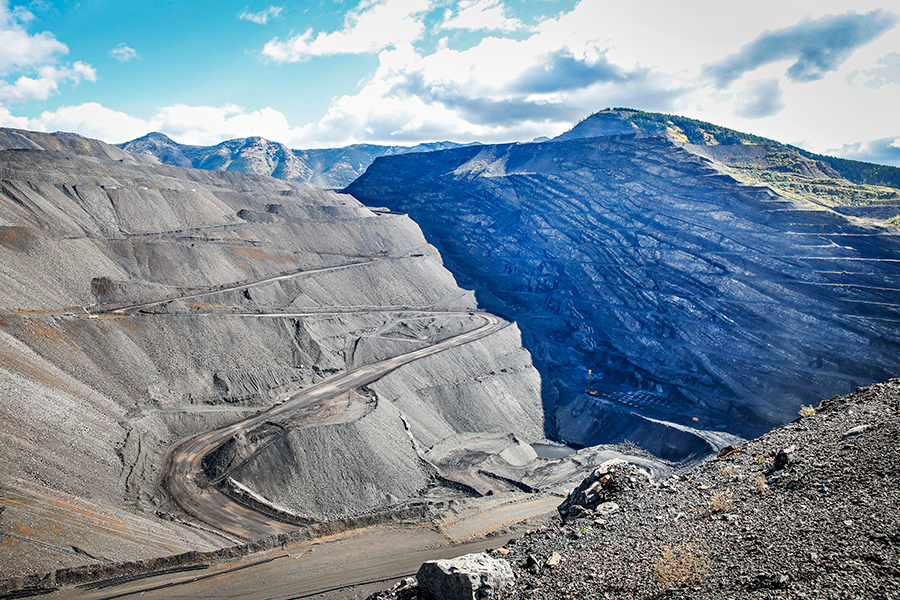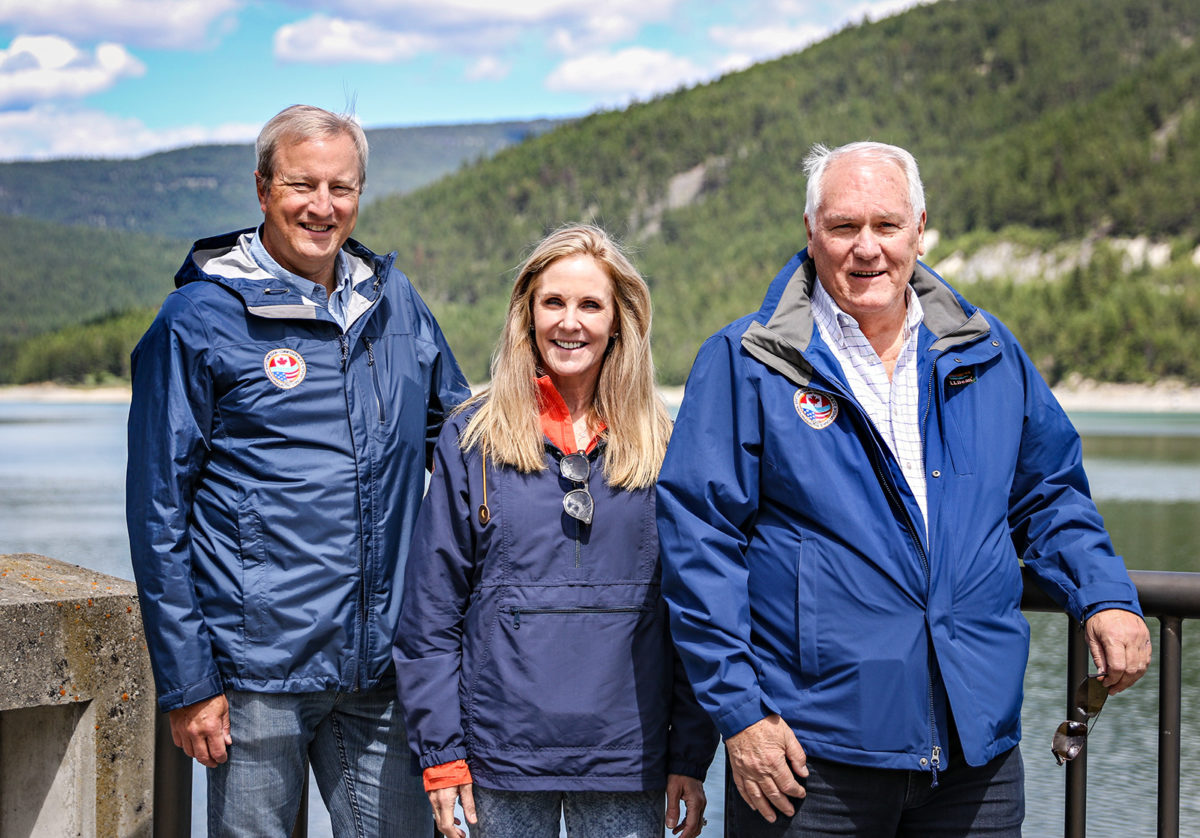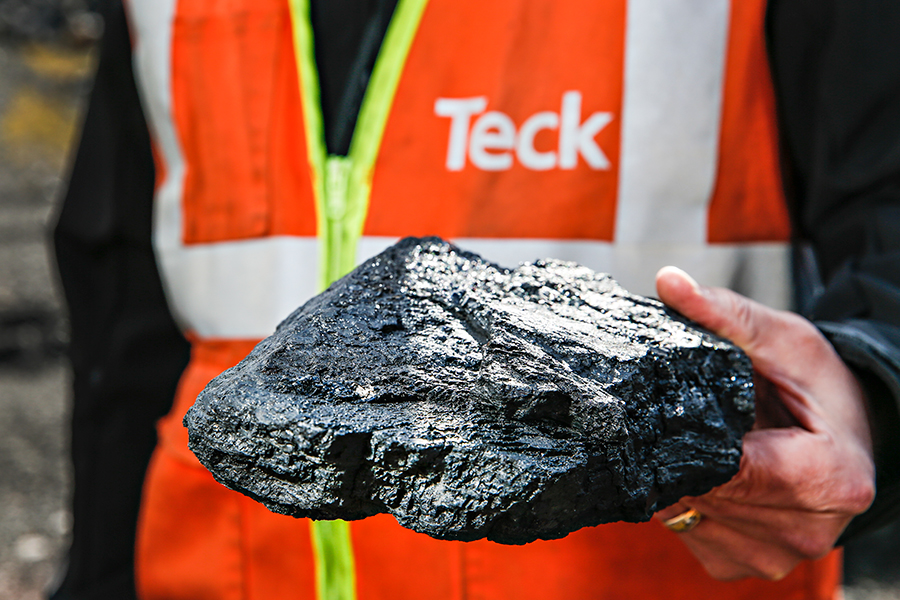Canada Walks Back Position on IJC Reference for Kootenai Coal Mine Contamination
Following reprimands from Indigenous leaders in B.C. and Montana, and as the U.S. considers unilateral action, Global Affairs Canada says it ‘has not rejected the possibility of a reference to the IJC at this time’
By Tristan Scott
After a scalding rebuke from Indigenous leaders over the Canadian government’s decision to nix a reference to the International Joint Commission (IJC) for help resolving decades of cross-border coal mine contamination in the Kootenai River watershed, officials with Global Affairs Canada (GAC) this week walked back their position, assuring tribal leaders and First Nation governments on both sides of the border of their commitment to “protecting freshwater resources.”
Mining operations in the Elk Valley and Kootenai River watershed (the Canadian and First Nation spelling of Kootenai is “Kootenay”) have created a legacy of pollution in the binational waters, which is a violation of Article IV of the 1909 Boundary Waters Treaty. The treaty was established specifically to address issues related to the management of transboundary waters between Canada and the United States. Under Article IV, disputes over pollution can be referred to the IJC, “whose expertise and institutional independence make it well suited to helping Canada, the U.S., British Columbia (B.C.) and the transboundary Ktunaxa better understand solutions for managing and reducing pollution throughout the watershed,” according to a statement this week from the Ktunaxa Nation in B.C. “It is the view of the Ktunaxa governments that the IJC reference is of great value.”
All six members of the IJC appeared to agree when, on May 13, they authored an unprecedented letter to Canadian Prime Minister Justin Trudeau and President Joe Biden explaining they are prepared to act on a reference with or without GAC’s consent, even as they expressed a strong desire to have both nations come to the table.
“We have heard from agencies, stakeholders, and Indigenous communities (including Ktunaxa Nation of Canada, Confederated Salish and Kootenai Tribes of Montana, the U.S. Environmental Protection Agency, U.S. Geological Survey, University of Victoria, and a host of NGOs) about their assessments that the problem is growing more critical,” the letter states. “Further, we understand the United States government is discussing the merits of a unilateral reference to the IJC on this matter. While we would accept and act on such a reference, as prescribed in the Treaty, we believe it is in the best interests of all concerned if a joint reference were made to the IJC.”

Whether that view is reciprocated by the Canadian government is up for dispute after GAC notified Ktunaxa leaders in late April that it was rejecting an IJC reference proposal that had been taking shape after years of negotiations. GAC officials have denied they rejected the reference proposal, characterizing it as a “miscommunication,” according to Ktunaxa leaders.
“Canada has not rejected the possibility of a reference to the IJC at this time,” according to an emailed statement from James Emmanuel Wanki, a GAC spokesperson, in response to inquiries from the Beacon. “We are committed to continuing to work with Indigenous Nations and the province of British Columbia on a collaborative path forward to address the concerns.”
However, the statement runs counter to a written notice GAC provided to leaders of the four bands of the Ktunaxa Nation in B.C. late last month informing the First Nation governments that GAC had abandoned a reference proposal, which the Ktunaxa have been requesting for a decade, along with the Confederated Salish and Kootenai Tribes (CSKT) in Montana and the Kootenai Tribes of Idaho (KTOI). In response, the Ktunaxa governments “communicated their disappointment and outrage” in a May 6 letter to Minister of Foreign Affairs Melanie Joly and Minister of Environment and Climate Change Steven Guilbeaut, calling upon Canada to “reverse this decision immediately” and “recommit to consent-based engagement with the Ktunaxa Nation on a joint IJC reference.”
Specifically, the Ktunaxa governments outlined GAC’s failure to meaningfully engage and implement the United Nations Declaration on the Rights of Indigenous Peoples (UNDRIP).
“It came as a slap in the face to our Nation and leadership to receive an email … informing us that GAC had unilaterally decided to reject the reference proposal,” according to the Ktunaxa’s letter. “This is a clear breach of the Federal government’s duty to consult. It is also an unfortunate example of high-handed, unilateral Federal conduct taken without any regard for Indigenous peoples. The manner of communicating this decision via an email from staff is also deeply disrespectful.”
Although GAC still has not indicated whether it will pursue an IJC reference, Canadian officials on May 20 met with Ktunaxa leaders to address their concerns and explain the apparent miscommunication.
“Canada was quick to reach out and explain that there was a miscommunication by a staff member, but we have an email explicitly saying that GAC was rejecting an IJC reference,” Nasukin Heidi Gravelle, chief of the Tobacco Plains band of the Ktunaxa Nation, told the Beacon in a May 20 interview. “They were adamant that it was not their intention to dismiss or reject IJC involvement. I don’t know why a staff member with no authority would send a letter saying the Canadian government was rejecting something we’ve been requesting for a decade. Because this is a very fragile issue across the border, not only for our Indigenous and First Nations in Canada, but also for our relatives separated at the 49th parallel, including our Kootenai people in Montana and Idaho who are very committed to this process as well.”
According to Gravelle, GAC officials said they would provide further written explanation in a letter by May 27; if they do not, “our next steps will be litigation,” Gravelle added.
“I’m trying to be politically correct here, but Canada demonstrated a blatant disregard for our First Nations as well as its legal obligations to us. We have been asking for IJC involvement for over a decade and it is long overdue and necessary to protect the health of our land and our water and our Ktunaxa and Kootenay people,” Gravelle said. “We don’t have any insight into [GAC’s] internal decision-making process, so our First Nations have been increasing the pressure to hold Canada to their legal obligations. Ultimately it is our duty to hold them accountable, and ultimately we are fighting for what we know is right, which is to fight for our land, water and ecosystems. At the end of the day our biggest concern is that there is a long history of pollution inflicted on the transboundary Kootenay watershed primarily caused by mining operations authorized by the province of British Columbia, which has occurred with minimal oversight or engagement and it needs to be addressed.”

The mounting pressure for an IJC reference comes as Canada’s largest diversified mining company, Teck Resources Limited, lays plans to expand its footprint by building new mines in the Elk River Valley, which flows into the Kootenay/Kootenai River and forms the Lake Koocanusa Reservoir at the international border separating Montana from B.C. The watershed has been beset by issues related to the mining contaminant selenium leaching into the rivers and impacting aquatic life.
Teck has spent hundreds of millions of dollars building three water quality treatment plants it says are designed to remove 95% of selenium from treated water; however, scientists say there isn’t any proven evidence to show the process is reversing or even stabilizing contamination trends at the U.S.-Canada border. Instead, the extent of the contamination appears to be even more widespread, with new data revealing concentrations of selenium in fish tissue that is higher than previously recorded.
According to Wanki, the GAC spokesperson, Environment and Climate Change Canada is currently developing Coal Mining Effluent Regulations (CMER) under the federal Fisheries Act, which would reduce the risks posed by harmful substances from coal mining effluent in order to protect the aquatic environment.
The CMER’s proposed approach will include the establishment of national baseline effluent quality standards for deleterious substances of concern, including selenium, which continues to flow across the border.
In the U.S., both Montana and Idaho recently took steps to address the selenium problem by adopting their own site-specific water quality standard for selenium at the border, a protective value crafted through years of scientific work to safeguard fish species in Lake Koocanusa and the Kootenai River. The standard for dissolved selenium concentration established by of Idaho and Montana, and approved by the U.S. EPA, is 0.8 micrograms per liter on Lake Koocanusa and 3.1 micrograms per liter on the Kootenai River. Measurements of selenium have reached 9.46 micrograms per liter in the Elk River, 4.99 micrograms per liter in Lake Koocanusa, and 1.4 micrograms per liter in the Kootenai River.
“The selenium contamination, first identified more than three decades ago, has continued to worsen, with no significant binational cooperation to protect the water or aquatic and human life,” the IJC letter states. “Throughout its history, the IJC has successfully listened to the concerns of stakeholders, gathered and shared in a transparent manner important scientific data, reliably monitored conditions, and, most importantly, built relationships and trust among the people, communities, and organizations on the ground on both sides of the border.”
“As always, we are prepared and willing to engage with the appropriate designees of your respective governments on this matter.”
Another recent request for immediate IJC action came from the University of Victoria Environmental Law Centre, where Calvin Sandborn, the school’s legal director, has prepared a summary of recommendations that outline what the terms of a reference should require, including the formation of a Kootenai River International Watershed Board to ensure that water quality objectives are met.
Sandborn described the delays in furnishing the contaminated transboundary watershed with an IJC reference as “ludicrous,” particularly given the proven record of regulatory negligence in B.C. For example, in 2016 the B.C. Auditor General released an audit chastising provincial mine regulators for “a decade of neglect in compliance and enforcement,” highlighting the coal mines above Lake Koocanusa as particularly egregious examples.
“We found almost every one of our expectations for a robust compliance and enforcement program within the (Ministry of Energy and Mines) and the (Ministry of Environment) were not met,” B.C. Auditor General Carol Bellringer wrote in the report.
Whether an IJC reference is secured on the Kootenai amounts to a “real test” of whether the Boundary Waters Treaty still has any teeth, Sandborn said.
“Here you have one of the worst pollution problems in North America and certainly one of the worst selenium problems in the world and Canada hasn’t acted,” Sandborn said. “If the IJC was meant to intervene on anything it was meant to intervene on this.”